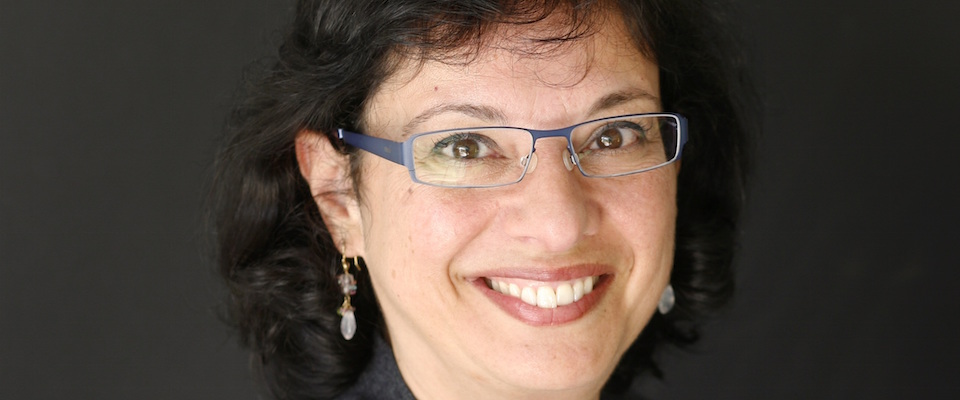When Sonia Nazario was 14 years old, she and her mother came across a pool of blood on the sidewalk. It had been about a year since they’d moved from Kansas to her mother’s native Argentina, right at the onset of the country’s “Dirty War.” She asked her mother about the blood. “The military killed two journalists today, for telling the truth about what’s going on here,” Nazario recalls her saying.
The revelation might have frightened other girls, but not Nazario, whose nickname was “La Granuja” – the troublemaker. She decided on the spot that she would become a journalist. She wanted to join those speaking out against injustice.
But as Nazario went on to report for The Washington Post, The Wall Street Journal and The Los Angeles Times, she learned to check her opinions at the door. Editors sniffed out any hint of bias, and it began to feel blasphemous to even speak to the editorial desk.
Nazario’s work had impact. Stories on children deprived of school breakfast programs or growing up with drug-addicted parents brought immediate local action. Enrique’s Journey, her Pulitzer Prize-winning series that became a book of the same name, brought attention to the plight of unaccompanied children migrating to the US from Central America.
But eventually, reporting the facts didn’t feel like enough. “More and more, non-engagement felt like the wrong choice. Keeping silent felt immoral,” she told a crowd of journalists in a keynote speech at the Power of Narrative conference at Boston University in late March. “Why do journalists who know an issue so well over time feel entitled to put a steaming turd in their readers’ laps and expect them to do something about it. Isn’t that why I got into this gig in the first place?”
Nazario explained that she’d joined the board of Kids In Need of Defense, a nonprofit that provides legal aid to unaccompanied immigrant children. She’d started writing opinion pieces about immigration in The New York Times and giving dozens of lectures a year. She’d testified before the Senate Foreign Relations Committee and presented a TEDx talk on the subject.
For the first time, Nazario was officially coming out as an activist.
“I thought you were going to throw spit-wads at me,” she told the crowd. Instead, she got a standing ovation. I asked Nazario, who got a master’s degree in Latin American studies from UC Berkeley in 1988, about her evolving professional identity. Her responses have been condensed and edited below.
How has your own immigration story informed your work?
I think it’s always been at the forefront of my mind. My parents were from Argentina, and I was born in Wisconsin and grew up in Kansas. We were virtually the only Latinos there, and we stood out like a sore thumb. We would roast a whole goat in the front yard, and the neighbors would look at us like, what’s going on over there? When my dad died, my mom and I went back to Argentina. People would spit on my shoes and say the World Bank and CIA ruined the country. I’ve always felt like I didn’t quite belong in either place. Because of that, I’ve always wanted to tell the immigrant story. That urge became stronger because my family has a lot of persecution in its background. My father fled Christian persecution in Syria, and my mother was a Jew who fled Poland before World War II. Then they both fled increasing military control in Argentina.
What do you think you were able to achieve in your role as a reporter, and what were the limitations of the objective approach?
I think you can do a really good job of showing people the problem. You can flesh out different perspectives on what the problem is and what to do about it. By delving deep using narrative, you can get at the heart of why one perspective is more likely to work than another. You do this in a very subtle way, but it’s powerful because you are putting readers in someone’s shoes. The limitation is that we do very little about solutions. You show people the problem and get them to empathize. Then they say, “OK, what do we do?” It’s not possible to be explicit, which is what you can do with advocacy.
Tell me about how you realized you needed to evolve from a journalist into an advocate.
Until about a year ago, when people would introduce me as advocate, I would cringe. I think that’s because it was so beaten into me that this is not what you do as a journalist. I fully understand why it’s so important to maintain those lines, and I worry about how much opinion I hear now out of people who are supposedly reporting.
But for me, it was trying to see how I could do the most good and feeling that there was a vacuum. People would turn to me as an expert, and I felt I knew the issue well enough to opine. The tipping point was 2014, when the numbers of immigrant children from Central America went through the roof: There were 69,000 apprehended that year, a tenfold increase over historic norms. I felt there were not enough people telling these kids’ stories and being a voice for them. More and more, my conscience was telling me it was time to step up. After 30 years of covering this, I knew what worked on immigration and what didn’t.
What’s unique about this moment in history when it comes to immigration, and what hasn’t changed?
For a long time, migrants to the US would go to six states. But in recent decades, following jobs, they’ve gone to virtually every county, places that haven’t seen migrants in 100 years. As a result, we’ve seen a backlash in state after state. Usually, when the economy improves, the pendulum swings back to the middle. We’ve seen that on the state level: More than a dozen states have passed laws allowing in-state tuition and driver’s licenses for undocumented immigrants. But at the federal level, the pendulum has kept swinging to the right, which is atypical. Partly that’s because we’ve had a messenger, Donald Trump, making it acceptable for people who have these fears. Some fears are legitimate: If you have only a high-school degree, you are competing for jobs and seeing some downward pressure on wages. But many of the fears are xenophobic and racist. Also, this economic recovery has been anemic and left many people feeling frustrated and behind.
What solutions do you see for the challenges of immigration policy, and why are they so hard to implement?
We keep trying the same three things that don’t work: building walls, guest worker programs and legalization. Any true solutions have to deal with what’s pushing people out of these countries in Central America. I wrote an op-ed about evidence-based violence prevention programs that reduced violence in Honduras. But immigration is a wedge issue, much like abortion and gun rights. These are issues used by political parties to further their particular needs, not ones they want to resolve. There are political constituencies that have pushed for what we’ve gotten on immigration, mostly businesses wanting cheap, compliant workers. You still don’t hear Trump talking about sanctions on companies that hire illegal immigrants. There’s no mileage in it for anyone to provide more foreign aid to fund violence-prevention programs in Central America. There are few lobbyists and groups that would inherently benefit from that, so no one is really pushing for it.
Openly becoming an activist has risks for your career. Have you gotten any blowback, and how are you balancing your old and new roles?
I knew a lot could be lost by stepping up. I knew a lot of people would think that I was “the brown girl” advocating for immigrants and did not view this issue in a nuanced way. Because I haven’t talked about it overtly until now, I haven’t gotten a lot of blowback. I’ve been out of newsrooms for a while. Journalism has become much more opinion-based, and there’s so much blurring of the lines that some people think the distinction is quaint. Media feels so much under attack that people are questioning the old rules. But my assumption is I can never write a news story again about immigration.
My fear is that people in parts of the country who disagree with the things I’m saying will refuse to adopt Enrique’s Journey in their school districts. My last piece in The New York Times argued that migrant children are refugees and should get special protections when they get here. I fear that the people I most want to reach will never read my book because the advocacy has turned them off. Currently, it’s probably the most-read book about immigration.
I’m making up the rules as I go along. I’m writing a book right now about women working on solutions to big social problems, and I don’t express my opinions. The training I’ve had for so long is deeply rooted, and I think it’s a good thing. I still want to find the truth as best I can — that’s what I want to do with my life.
Katia Savchuk is an Oakland-based journalist whose work has appeared in Forbes, The Washington Post, The Guardian, Village Voice, and other publications.
Join the conversation on immigration at the Cal Alumni Association’s panel discussion “A Dream Denied? The Immigrant Experience in the Campus Community” on Tuesday, April 11 in Berkeley, CA. Register and find the details here.





















